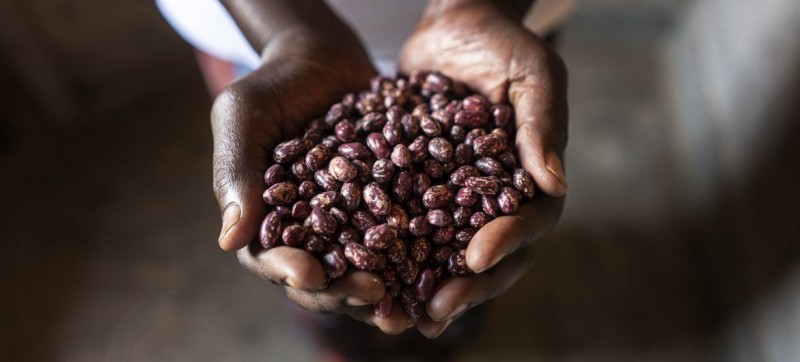A rwandese farmer holds a handful of beans after the harvest. The UN’s benchmark food and commodity prices index rose sharply on average through 2021, compared with the previous year, the Food and Agriculture Organization (FAO) informed on Thursday. The agency’s Food Price Index, which tracks monthly changes in international prices, averaged 125.7 points – a 28.1 per cent increase over 2020. FAO Senior Economist Abdolreza Abbassian explained that, normally, high prices are expected to ease as production increases to match demand. This time, however, the consistently high cost of inputs, the ongoing global pandemic and ever more volatile climatic conditions “leave little room for optimism about a return to more stable market conditions even in 2022.”
Year’s end
At the end of the year, world food prices fell slightly, as international prices for vegetable oils and sugar fell significantly, the data shows.
The Food Price Index averaged 133.7 points, a 0.9 per cent decline from November, but was still up 23.1 per cent from the same month the year before. Only dairy posted a rise that month.
The Cereal Price Index also decreased 0.6 per cent; for the full year, however, it reached its highest annual level since 2012, rising 27.2 per cent.
Biggest gainers were maize, up 44.1 per cent, and wheat, gaining 31.3 per cent. One of the world’s other key staple foods, rice, lost 4 per cent.
Oil and sugar
The Vegetable Oil Price Index declined 3.3 percent in December, due to lower global import demand, that may be linked to concerns over the impact of rising COVID-19 cases, which have led to delays in the supply chain.
For the year as a whole, the Oil Index reached an all-time high, increasing 65.8 per cent compared with 2020.
Another key staple, sugar, dropped by 3.1 per cent last month from November, reaching a five-month low.
FAO analysts said this shows concerns over the impact of the Omicron variant on global demand as well as a weaker Brazilian Real, combined with lower ethanol prices.
For the year as a whole, the Sugar Price Index rose 29.8 per cent, reaching its highest level since 2016.
Meat and dairy
The Meat Price Index was “broadly stable” in December, but rose 12.7 per cent through the year as a whole.
Dairy was the only category where prices increased in the last month of the year, rising 1.8 per cent on November, mostly because of lower milk production in Western Europe and Oceania.
Cheese prices declined marginally last month, but for the year overall, the Dairy Price Index averaged 16.9 per cent higher than 2020.



